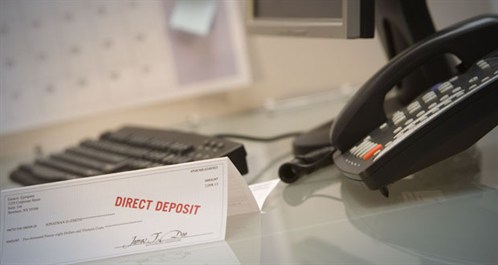Balancing your checkbook isn’t what it used to be. Before online banking, debit cards and electronic payment systems, you wrote a check and entered the date and amount in your checkbook register. When you subtracted the difference, you knew exactly how much money you had. Not anymore. Direct deposit, ATM fees and surcharges, online payments, automatic transfers and debit charges make keeping your account in balance a real juggling act.
That doesn’t mean you should just give up. Keeping track of your account balance is still one of the most important steps toward taking control of your finances. It will help you:
- Avoid overspending.
- Track where your money goes.
- Avoid unnecessary fees or other costly surprises.
- Help you identify small changes that can make a big difference in your cash flow.
- Help you develop strategies to build your savings for the long term.
And there are lots of free online tools and software that can help.
What you’ll need:
- Calculator
- Bank statements or online account access

1. Review your spending. Look at your three most recent statements to determine how you use your checking account. Do you take large cash withdrawals and budget your money throughout the month? Or do you use your debit card for nearly every transaction? Are you paying more than you’d like on ATM fees and surcharges? Do you commonly pay low-balance fees, overdraft charges or monthly service charges? Does money tend to be tight during certain times of the month?
2. Try to reduce fees and costs. After analyzing your spending, think about any changes you can make to cut down on fees, such as avoiding out-of-network ATMs or switching to an account with no minimum balance. Would it make a big difference in your cash flow to pay your bills at a different time of the month?
3. Shop for a better account. Once you’ve studied how you use your account and made some basic changes, consider whether or not this is the best account for you. Shop around and see if another account could meet your needs better – such as one with lower fees or more convenient ATMs, lower minimum balance requirements or more online capabilities.
4. Look for a good money management tool. Many banks and credit unions allow you to view your account activity online. It’s important to review your accounts regularly to monitor current balances and to check when transactions are credited to or deducted from your account and to watch for suspicious activity. If you’re comfortable with online banking, then you should take the next step and look into budgeting or personal financial software. See if your bank offers free budgeting software, or ask if they could recommend a free website you could use. Another option is downloadable software that you can install on your home computer. These websites and programs will not only help you monitor your banking transactions, they’ll let you keep track of other accounts too – from savings accounts to credit card balances, investments and other assets.
5. Monitor your accounts regularly. After you pick a money-management tool, enter your account information into the program, automate any updates when possible and keep the information up to date – hold onto your ATM and debit-card receipts, for example, until you’ve recorded them. Check your balances regularly so you can avoid fees for low balances or overdrawing your account. If you’re married, communicate regularly about the money that is coming into and out of the account. You’re not asking permission; just avoiding surprises.
6. Review your spending again. Step back every few months and review the information in your money management program as a way to help with your long term financial plans:
- Are you spending as much as you bring in?
- Are there any ways you can cut back?
- Are there extra ways you can boost your savings?
Reviewing this information can make it easier to see where you can make adjustments to help with your long-term financial plans. And if you find you have some extra money available beyond your regular expenses every month, increase your Thrift Savings Plan contribution or create an allotment to a savings account for emergencies, future moves or other goals.
PRINT PDF
Source: Content provided and maintained by the FINRA Investor Education Foundation and SaveAndInvest.org